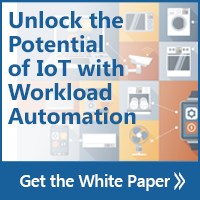Last November, Gartner looked towards the future and predicted that in 2016, 6.4 billion connected things will be in use worldwide. Today is that future. Around us right now, billions of connected things are speaking to each other, passing data, and keeping our lives efficient and modern. From the things we wear (our smart watches, our fitness trackers), to the perks that make our lives easier (our navigation systems, our smart thermostats and lighting systems) to the places we shop (think pharmacy mobile photo printing, mobile coupons based upon buying preferences) the IoT is already heavily integrated into our lives. Think about all of these connections in our lives today—and now multiply those connections by four. Gartner reports that by 2020, the amount of connected things is expected to rise to 25 billion. What IT I&O leaders need to know is what is enabling all of these connections and how organizations and businesses are expected to keep up with the growth and manage these links.
API management is the answer that I&O leaders are looking for. APIs are enabling devices to communicate and pass data between one another. This means that you can operate and manage devices and applications without having to stand in front of them and manually press buttons. Think of the smart thermostat in your home that you can adjust from your phone when you leave work, so that it’s a good temperature when you walk in the door, or the intelligent beverage appliance that will order you more coffee or tea when you start to run out. We are seeing an abundance of connected devices, and these devices have the potential to become overwhelming and difficult to manage. If organizations want to optimize their usage of the Internet of Things, API management is critical.
From a business perspective, we are seeing the IoT across industries. We are seeing it in hospitals—with patient wearables that are communicating critical information to health care professionals. We are seeing it in transportation and delivery organizations, through intelligent vehicle and package tracking sensors. The IoT is providing organizations with mass amounts of data from all of these different connections—which brings us to one of the hottest topics in the tech field today: Big Data.
Big Data refers to the plethora of information we are constantly receiving—from wearables, to sensors, to smart-phones, to whichever IoT devices that you prefer, we are surrounded by overwhelming amounts of data. Organizations have more data than ever before at their fingertips, and with this data comes the visibility of patterns, information, and knowledge that no businesses have ever seen. Every different device and tool that the IoT is connecting through APIs brings more and more data to IT departments. Organizations need to find a way to simplify the management of all of this information. An automation solution that manages your external applications and/or technologies from one single point of control provides an efficient and effective approach to coordinating these operations. IT automation can centralize your IT environment and allow you to reap the benefits created by APIs within the IoT and Big Data.
With the astronomical number of already connected “things” only predicted to quadruple in the coming years, we are looking at a steady increase in applications, devices, technologies and systems that will need to be coordinated. IT teams will need to simplify the management APIs and of every connected device they utilize and the mass quantities of data that they are receiving and processing. The IoT is rapidly developing—it is time that organizations look to a solution that will enable them to develop with it.
Interested in reading more about how you can unlock the potential of IoT with workload automation? Read our white paper!

